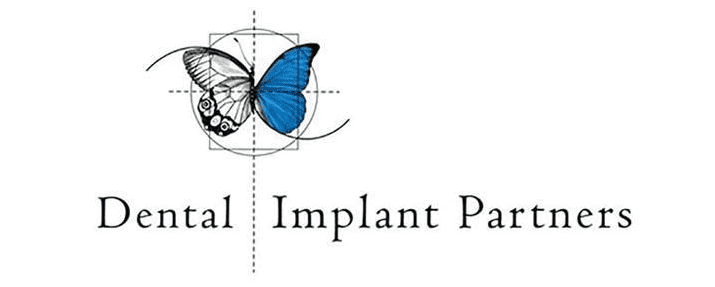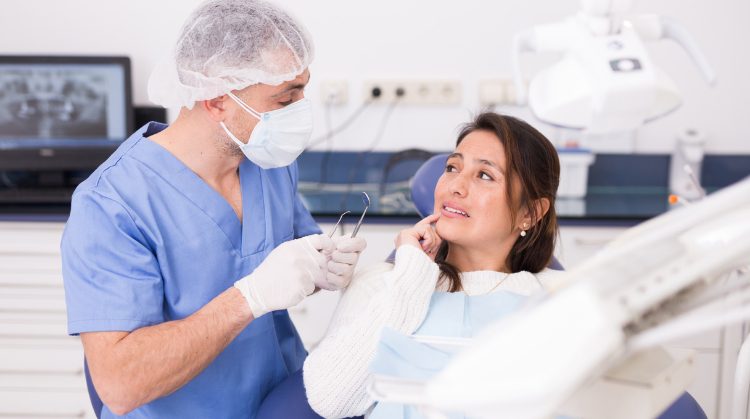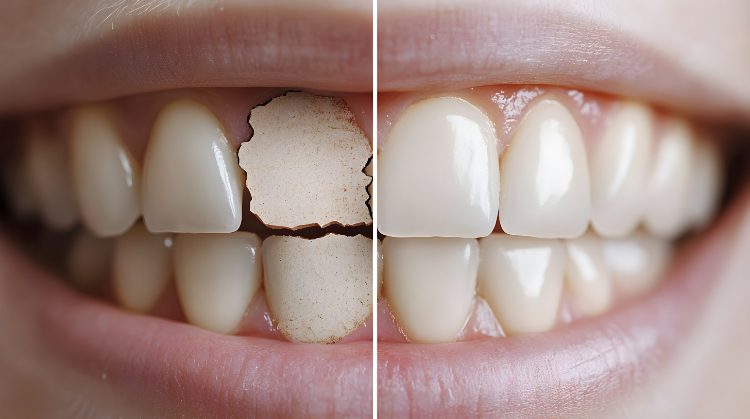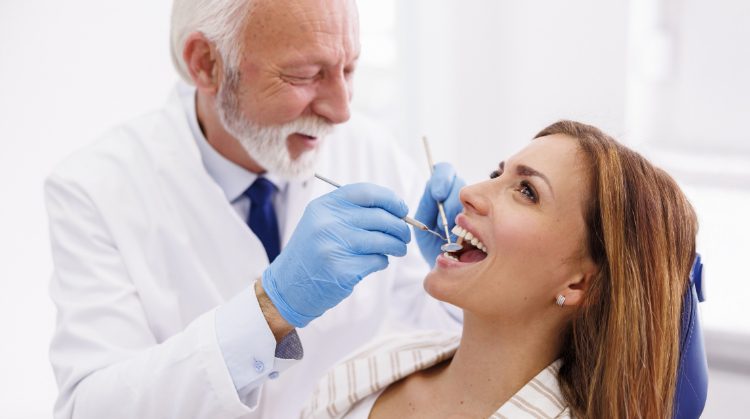By Dr. Belinda Gregory-Head, Dental Implant Partners – San Francisco
When patients find themselves in sudden pain or distress related to their oral health, an emergency dental visit often becomes their only option. Unlike routine appointments, which are planned in advance and designed for preventive care, emergency dentistry is about timely intervention to alleviate pain, prevent complications, and preserve oral function. As a dentist practicing in San Francisco, I frequently see patients who delay seeking care until a crisis emerges, often making their treatment more complex. An emergency appointment serves as a critical safeguard against deterioration, ensuring that patients receive the right care at the right time.
Dental emergencies are not only about pain; they can carry systemic implications as well. Untreated abscesses, for instance, can lead to severe infections that extend beyond the oral cavity into surrounding tissues and even the bloodstream. A fractured tooth can compromise occlusion and lead to long-term bite dysfunction if not addressed promptly. These are not situations where “waiting it out” is advisable; instead, they demand rapid, evidence-based interventions. Patients often underestimate how quickly a minor-seeming dental issue can progress to something serious.
The psychological component of dental emergencies should not be overlooked either. Anxiety and fear are amplified when pain is sudden and severe, leaving patients uncertain about what is happening and how it will be treated. As a clinician, part of my role is to bring clarity and reassurance during such moments. Knowing what to expect during an emergency visit not only empowers patients but also reduces anxiety, improving cooperation and treatment outcomes.
With that in mind, this guide is designed to provide patients with an in-depth overview of what happens during an emergency dental visit. I will walk through the entire process: from initial triage to diagnosis, treatment, and aftercare. My goal is to demystify the experience so that when an emergency arises, you are better prepared, less anxious, and more confident in seeking timely care.

Recognizing a True Dental Emergency
Not every oral issue requires immediate intervention, but understanding what qualifies as a genuine dental emergency is crucial. Severe pain, uncontrolled bleeding, facial swelling, or trauma involving teeth and surrounding structures generally warrant urgent care. On the other hand, situations such as a lost filling or a small chip in a tooth may not require same-day treatment unless accompanied by pain or sharp edges causing trauma to the tongue or cheek. Differentiating between urgent and non-urgent scenarios allows for proper allocation of emergency resources and prevents unnecessary stress for the patient.
As clinicians, we classify emergencies broadly into categories: traumatic injuries, infections, and acute functional issues. Traumatic injuries may include avulsed (knocked-out) teeth, luxated (displaced) teeth, and fractured crowns or roots. Infections encompass abscesses, cellulitis, and pericoronitis. Acute functional issues involve situations such as prosthetic failures, temporomandibular joint (TMJ) dislocations, or broken appliances that impair speech or eating. Understanding these categories helps patients realize why certain cases are prioritized more urgently than others.
Infection-related emergencies are often underestimated. A dental abscess, while localized, can spread rapidly through fascial spaces of the head and neck. This can lead to potentially life-threatening conditions such as Ludwig’s angina or cavernous sinus thrombosis. When I evaluate such cases, my immediate concern is airway compromise, systemic involvement, and rapid spread of infection. Patients presenting with fever, malaise, or lymphadenopathy alongside dental pain should never delay treatment.
Trauma, particularly in younger patients, is another domain where time is critical. For example, an avulsed permanent tooth has the best prognosis for reimplantation within 30 to 60 minutes of the injury. Every minute counts in preserving periodontal ligament viability. That is why I urge parents and caregivers to seek care immediately when a child suffers dental trauma, rather than assuming that “the tooth can be fixed later.”
The Triage Process: What Happens First
When a patient contacts my practice with an emergency, the first step is triage, which begins even before they arrive. My team is trained to ask targeted questions: What is the nature of the pain? How severe is it on a scale of 1 to 10? Is there swelling, bleeding, or difficulty breathing? Gathering this information allows us to prioritize scheduling, ensuring that patients in critical condition are seen without delay. This process mirrors triage in hospital emergency rooms, where urgency determines the sequence of care.
Upon arrival, the in-office triage begins with a focused evaluation. I pay close attention to vital signs, the patient’s overall demeanor, and any signs of systemic compromise. For example, tachycardia or elevated temperature may indicate a spreading infection that cannot be addressed solely with local measures. In such cases, antibiotics or even referral to a hospital setting may be warranted. Conversely, a localized fractured cusp without pain may allow for a temporary restoration until a comprehensive appointment can be arranged.
Diagnostic imaging forms an essential part of triage. In most emergencies, periapical or panoramic radiographs are obtained immediately to assess underlying structures. Cone beam computed tomography (CBCT) may also be employed when trauma involves suspected root fractures, jaw fractures, or sinus involvement. These imaging modalities are not just diagnostic tools; they are decision-making instruments that guide treatment urgency and precision.
Triage also involves managing the patient’s emotional state. Acute dental pain often triggers heightened anxiety, which can complicate both the assessment and the treatment itself. By explaining each step clearly and offering reassurance, I find that patients are more cooperative and receptive to procedures. This human element of triage is as vital as the technical evaluation because it sets the tone for the rest of the emergency appointment.
Pain Management Strategies During Emergencies
Pain is the leading motivator for patients to seek emergency dental care, and managing it effectively is central to treatment. In my practice, I approach pain management with a multimodal strategy that considers the source, intensity, and underlying pathology. Local anesthesia remains the cornerstone of immediate relief, but in cases of severe infection or inflamed pulpal tissue, achieving profound anesthesia may be challenging. In such situations, supplemental techniques such as intraosseous or periodontal ligament injections are often employed to achieve effective pain control.
Pharmacological management extends beyond the dental chair. Non-steroidal anti-inflammatory drugs (NSAIDs) are typically first-line agents for dental pain because they target prostaglandin-mediated inflammation at the source. For cases where NSAIDs alone are insufficient, I may combine them with acetaminophen, which works through a different mechanism to enhance analgesia. Opioids are rarely indicated in modern dental practice, and when they are, it is for the shortest possible duration under strict guidelines, given the risk of dependence and misuse.
Infection-related pain presents unique challenges. When swelling and tissue tension are significant, antibiotics may be prescribed alongside drainage procedures to address the underlying cause. Simply masking pain without eliminating infection would be negligent, as untreated infection can lead to serious complications. For patients with systemic involvement, I carefully select antibiotics based on likely pathogens, patient allergies, and resistance patterns, always aiming to minimize unnecessary antibiotic exposure.
Finally, pain management is not only physical but psychological. Patients experiencing severe pain often enter what we call a “fear-pain cycle,” where anxiety amplifies the perception of discomfort. Conscious sedation techniques, such as nitrous oxide or oral sedatives, can be employed for patients with extreme dental anxiety. By breaking the cycle, I can not only relieve immediate suffering but also create a more positive perception of dental care that encourages patients to seek preventive treatment in the future.
Common Emergency Procedures
Once pain is controlled and a diagnosis is established, treatment can proceed. The specific procedure depends on the nature of the emergency, but certain interventions are more common than others. For example, in cases of irreversible pulpitis, initiating root canal therapy is often the definitive treatment. In an emergency setting, this may involve opening the tooth, cleaning out infected pulp tissue, and placing a medicated dressing to stabilize the tooth until the full root canal can be completed.
For dental abscesses, incision and drainage remain a cornerstone of treatment. This procedure involves carefully opening the abscess to relieve pressure, drain purulent material, and reduce bacterial load. Depending on the severity, adjunctive systemic antibiotics may also be prescribed. It is critical to emphasize to patients that drainage alone is not the cure. It is a step in a larger treatment plan, which may include root canal therapy or extraction depending on the prognosis of the affected tooth.
Dental trauma requires a specialized approach, particularly when dealing with fractured or avulsed teeth. For fractures involving enamel and dentin but sparing the pulp, a direct composite restoration may suffice. However, if the pulp is exposed, vital pulp therapy or endodontic intervention becomes necessary. In cases of avulsion, I focus on gently replanting the tooth and splinting it to adjacent teeth to allow for healing of periodontal structures. Timing is critical here, as delayed reimplantation significantly reduces long-term survival rates.
Prosthetic emergencies are another common category. Broken crowns, dislodged bridges, or fractured dentures can impair function and esthetics, which are often just as distressing to patients as pain. Temporary fixes such as re-cementation or repair with dental acrylic allow patients to resume daily activities while awaiting definitive prosthetic solutions. Managing expectations is important in these cases, as emergency procedures are frequently temporary in nature, designed to stabilize rather than finalize treatment.

Diagnostic Imaging and Clinical Examination
Accurate diagnosis during an emergency visit hinges on comprehensive imaging and a meticulous clinical exam. Standard periapical radiographs are often sufficient for assessing localized pain, but panoramic radiography provides a broader view of jaw structures, temporomandibular joints, and sinuses. In complex trauma or infection cases, CBCT imaging becomes indispensable, offering three-dimensional visualization of fractures, lesion extent, or proximity to vital structures such as the mandibular canal.
Clinical examination involves more than just looking at the teeth. I perform a structured evaluation that includes extraoral inspection for swelling, asymmetry, or lymphadenopathy, followed by intraoral assessment of soft tissues, occlusion, and tooth mobility. Percussion and palpation tests, vitality testing, and probing depths all contribute to differential diagnosis. For instance, distinguishing between a vertical root fracture and localized periodontitis requires both clinical and radiographic correlation.
Soft tissue evaluation is particularly critical in trauma cases. Lacerations of the lips, tongue, or gingiva must be carefully assessed for depth, involvement of muscle layers, and potential contamination with foreign objects. Closure of these wounds often requires precise suturing with attention to esthetic and functional outcomes. Failure to properly assess soft tissue injuries can lead to scarring, compromised function, or chronic discomfort.
The integration of diagnostic findings with patient history is what guides treatment decisions. For example, a patient presenting with localized swelling near a molar and a history of recent dental work may suggest a failed root canal, while similar swelling in a patient with systemic symptoms could indicate spreading cellulitis. Every piece of information matters, and it is this synthesis of data that allows for precise and effective emergency treatment.
Patient Communication and Informed Consent
A crucial yet sometimes overlooked aspect of emergency dentistry is patient communication. In moments of pain or distress, patients may struggle to process complex information. My responsibility is to convey diagnoses and treatment options clearly, concisely, and without overwhelming jargon. Explaining what is happening, why immediate treatment is necessary, and what risks exist allows patients to make informed decisions even in stressful circumstances.
Informed consent is more than a signed form; it is a conversation. During emergencies, patients may feel pressured to proceed quickly, but ethical practice requires ensuring they fully understand their choices. For example, when recommending extraction versus root canal therapy, I outline not only the immediate implications but also the long-term functional and esthetic outcomes. This empowers patients to choose a path aligned with their values and circumstances.
Transparency about risks and limitations is equally important. Emergency treatments often serve as temporary stabilization rather than final resolution. I emphasize to patients that follow-up care is essential to achieve lasting results. Without this clarity, patients may mistakenly believe that their problem is permanently solved after a single emergency visit, leading to neglect of definitive treatment.
Effective communication also builds trust. In dentistry, where fear and anxiety are common, establishing trust during a crisis can transform how patients perceive dental care in general. Many of my long-term patients first came to me during emergencies. By treating them with compassion, respect, and professionalism in those moments, I established a foundation for lasting therapeutic relationships.
Aftercare and Follow-Up Planning
Emergency treatment is only the first step in restoring oral health; comprehensive aftercare is essential to prevent recurrence and ensure healing. Following any emergency intervention, I provide patients with detailed instructions tailored to their case. These may include dietary modifications, oral hygiene recommendations, and guidance on medication usage. For example, after incision and drainage of an abscess, I stress the importance of completing antibiotic courses and monitoring for signs of recurrence.
Pain and swelling management at home is another focus. I often recommend alternating NSAIDs and acetaminophen, applying cold compresses, and maintaining hydration. Importantly, I instruct patients on what warning signs should prompt an immediate return to the clinic, such as increased swelling, fever, or spreading redness. Patient education in this regard can prevent minor setbacks from escalating into secondary emergencies.
Follow-up appointments are critical, as emergency care is rarely the final solution. A temporary restoration must be replaced with a permanent one, an abscessed tooth may require definitive endodontic therapy, and a reimplanted tooth needs ongoing monitoring for root resorption or ankylosis. Scheduling and emphasizing these follow-ups ensures that patients transition seamlessly from crisis management to long-term stability.
Finally, aftercare involves addressing the root cause of the emergency to prevent recurrence. This might mean discussing preventive strategies such as custom mouthguards for athletes prone to dental trauma, occlusal guards for patients with bruxism, or improved periodontal maintenance for those with recurrent infections. By shifting the focus from reactive to proactive care, we reduce the likelihood of future emergencies and promote overall oral health.
Final Thoughts: Preparing for the Unexpected
Dental emergencies are disruptive and often frightening, but with proper guidance and timely intervention, they can be managed effectively. From triage to treatment and follow-up, every step is designed to alleviate pain, control infection, restore function, and prevent complications. As a practicing dentist in San Francisco, I have witnessed firsthand how preparation and education transform patient outcomes. The more patients understand about what to expect, the smoother their emergency visit becomes.
Being prepared does not mean predicting when a dental emergency will happen. It means knowing how to respond when it does. Keeping your dentist’s contact information readily accessible, understanding the signs of true emergencies, and not delaying care are all simple but powerful steps. Patients who are proactive in seeking help not only experience faster relief but also better long-term results.
I encourage my patients to view emergency visits not as isolated events but as part of their overall oral health journey. Each emergency teaches us something about underlying risk factors, about preventive strategies, and about resilience. By embracing both the challenges and the lessons of emergencies, patients can take control of their oral health more effectively.
Ultimately, my role as your dentist is not just to treat emergencies but to empower you with knowledge. When you understand what to expect, you enter the dental chair not just as a patient in crisis, but as an informed partner in your own care. That collaboration is what ensures the best possible outcomes, both in emergencies and in everyday oral health.

About Dental Implant Partners
At Dental Implant Partners, I have had the privilege of serving patients in San Francisco for more than 25 years. What began as my prosthetic practice has grown into a highly skilled team of prosthodontists, general dentists, and hygienists who share the same dedication to excellence and patient-centered care. Our hygienists are not only exceptionally experienced but also trained as dentists, and many of our patients consider them trusted partners in their oral health. The depth of knowledge and compassion within our team ensures that every patient, whether they are here for a simple filling or a full-mouth rehabilitation, receives thoughtful, comprehensive care.
Emergency dentistry often introduces patients to our practice for the first time. While alleviating pain and stabilizing urgent issues is always our immediate priority, we also focus on creating a path to long-term oral health and confidence. Our restorative expertise includes everything from veneers to implant-supported rehabilitations, and for those who are not candidates for implants, we take pride in delivering beautifully crafted dentures. The goal is never just to resolve today’s emergency but to restore full function and esthetics with durable, tailored solutions.
We believe that dentistry is about relationships as much as it is about treatment. Many of our patients have been with us for years because we place great value on ethical care, transparency, and consistency. Our practice environment reflects these values: a beautiful suite overlooking the San Francisco Bay where patients feel comfortable and cared for. Whether you are here because of an urgent emergency or for a planned restorative treatment, our focus is always on providing the highest quality care with respect and integrity.
If you are experiencing a dental emergency or are ready to take the next step in restoring your smile, I encourage you to reach out to us at Dental Implant Partners. We love what we do, and we are passionate about helping patients regain health, comfort, and confidence. Contact our San Francisco office today to schedule your appointment and let us help you achieve the smile you deserve.




